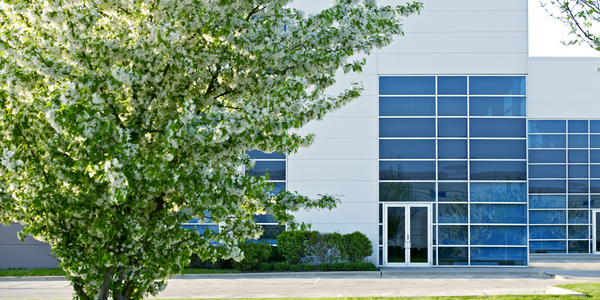技术
- 传感器 - 空气污染传感器
适用行业
- 水泥
适用功能
- 产品研发
- 销售与市场营销
关于客户
本案例研究中的客户是 Dassault Systèmes,一家 3DEXPERIENCE 公司。达索系统是 3D 设计软件、3D 数字模型和产品生命周期管理 (PLM) 解决方案领域的全球领导者。该公司为企业和人们提供虚拟世界来想象可持续的创新。他们的解决方案促进社会创新,扩大虚拟世界改善现实世界的可能性。在该项目中,达索系统通过与 Kengo Kuma and Associates 合作创建“Breath/ng”空气净化装置,展示了其对可持续发展和创新的承诺。
挑战
达索系统是一家 3DEXPERIENCE 公司,面临着应对气候变化的挑战,气候变化是我们世界面临的最重大威胁之一。该公司旨在利用基于解决方案的设计来构建更加可持续的未来。为了实现这一目标,他们与全球知名的建筑师和思想领袖 Kengo Kuma and Associates 合作。面临的挑战是考虑在其创作中使用现有的污染中和材料。目标不仅是创建可持续的解决方案,而且是激发设计界内部关于设计和技术融合时出现的潜在解决方案的对话。
解决方案
解决方案是“Breath/ng”,这是一种空气净化装置,能够吸收相当于 90,000 辆汽车排放的污染物。该装置由一系列单一的建筑单元、120 个手工折叠的折纸面板组成,并悬挂在一根碳纤维杆上。这种创新的构建结合了数十年的建筑经验与传统折纸工艺,利用 3DEXPERIENCE 平台来测试和探索创建此类网络的可能性。 “Breath/ng”不仅是解决紧迫环境问题的实用解决方案,而且还引发了设计界内部关于将设计与技术相结合以扩展和改善现实世界的潜力的对话。
运营影响
数量效益

Case Study missing?
Start adding your own!
Register with your work email and create a new case study profile for your business.
相关案例.

Case Study
System 800xA at Indian Cement Plants
Chettinad Cement recognized that further efficiencies could be achieved in its cement manufacturing process. It looked to investing in comprehensive operational and control technologies to manage and derive productivity and energy efficiency gains from the assets on Line 2, their second plant in India.

Case Study
Digital Transformation of Atlanta Grout & Tile: An IoT Case Study
Atlanta Grout & Tile, a Tile, Stone & Grout restoration company based in Woodstock, Georgia, was facing challenges with its traditional business model. Despite steady growth over the years, the company was falling behind the web revolution and missing out on the opportunity to tap into a new consumer base. They were using independent software from different vendors for each of their department information and workforce management. This resulted in a lot of manual work on excel and the need to export/import data between different systems. This not only increased overhead costs but also slowed down their response to clients. The company also had to prepare numerous reports manually and lacked access to customer trends for effective business decision-making.

Case Study
Revolutionizing Construction Equipment Rental: A Case Study on ProsRent and ENO8
ProsRent, a startup that won the 'Best Financial Opportunity' and 'Best Pitch' at CodeLaunch 2016, aimed to revolutionize the way construction professionals source and rent heavy equipment. In the construction industry, project managers and contractors typically rent heavy equipment from supply companies. However, predicting inventory can be challenging, and finding the required equipment at the right time and place can be a hassle. If the preferred vendor doesn't have the required equipment, it results in wasted time and money in searching for it, often leading to higher costs due to non-preferred rates and increased delivery costs if the vendor is located far from the job site. Suppliers, on the other hand, desired access to a wider base of trusted renters that they didn't have to vet themselves and wanted to offer dynamic rental pricing based on demand and availability in their market. ProsRent's challenge was to produce a minimum viable product that was fast and first to market but also strong enough to engender loyalty and repeat business from the target market.

Case Study
AI-based Automation for Commercial Office HVAC: A Verdigris Case Study
Modern buildings are required to run longer hours, support a variety of end uses, and contribute to higher levels of economic productivity, leaving a thin margin for error. However, even the most advanced building and environmental control systems have failed to adequately support facilities and operations management. Buildings are often inefficient and the people using them are underserved. To meet occupant comfort and maintain cost and energy efficiency, a dynamic, AI-assisted approach is needed.

Case Study
Revamping EE's Legacy ERP: A Case Study on BT's Strategic Transformation
EE, even after its merger with BT, was operating its ERP estate on legacy infrastructure, hosted on the premises of a third-party supplier. This outdated system resulted in a volume-based operational model, higher time to market, longer delivery cycles, and unsatisfactory customer experience. BT recognized the need for a strategic transformation of these aging ERP systems and sought a partner who could proactively manage application services. The partner was also expected to handle development requirements associated with application management services, drive accountability, and ownership with a time and target-driven transformation of these services. BT's primary goals were to improve customer experience, reduce cycle time, and measure these improvements with precision.








